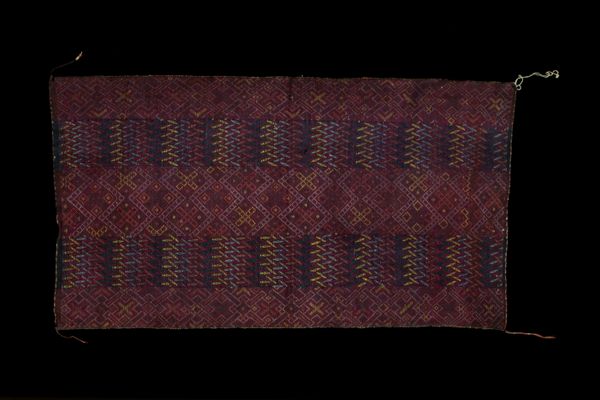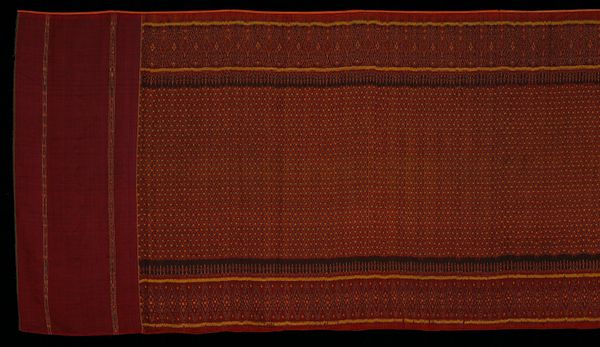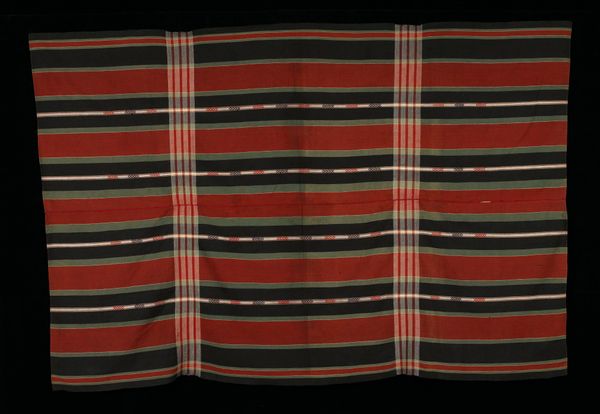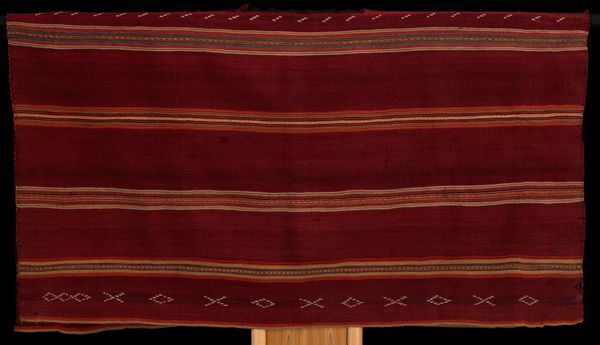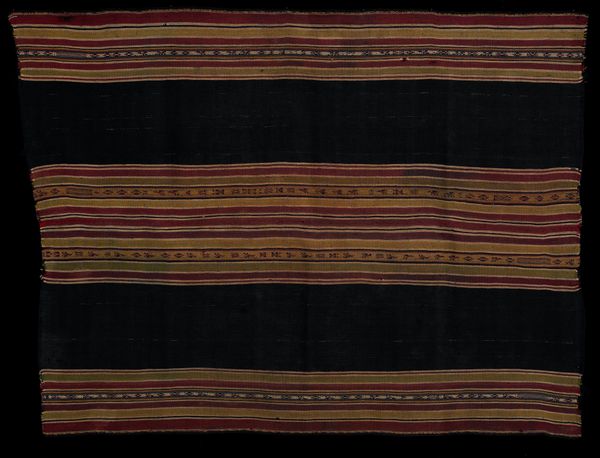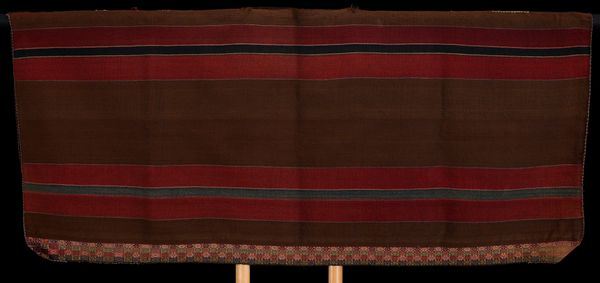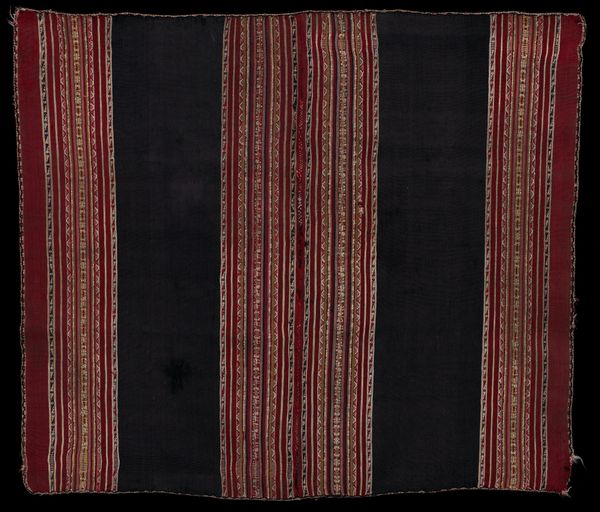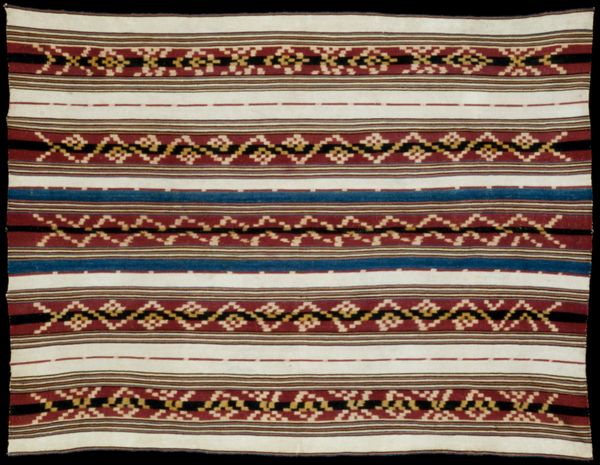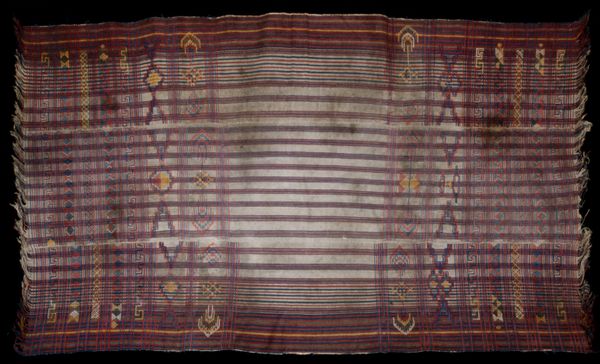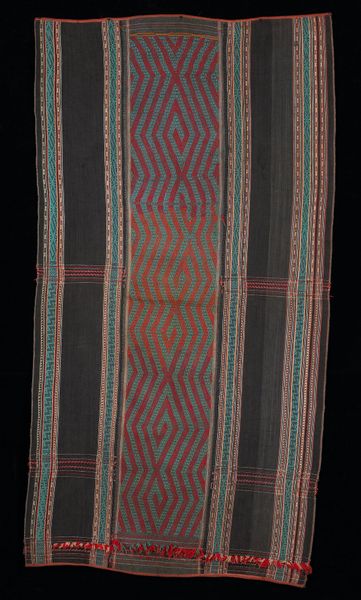
fibre-art, weaving, textile
#
fibre-art
#
weaving
#
textile
#
geometric pattern
#
geometric
#
pattern repetition
Dimensions: 54 x 40 in. (137.16 x 101.6 cm)
Copyright: Public Domain
Curator: Let's take a moment to discuss this Ceremonial Skirt from the Haka Chin people; its date is unknown, but it’s part of the Minneapolis Institute of Art's collection. Editor: Immediately striking is its sombre, almost stark palette contrasted with the geometric intricacies. The weight of the textile comes across even visually. Curator: The patterns, predominantly geometric, hold significant cultural weight within Haka Chin society. Textile production like this goes beyond mere craft; it's deeply intertwined with their history, social structures, and, particularly for ceremonial items, spiritual beliefs. Editor: Absolutely. We’re looking at woven cotton, a material that, in this context, represents a whole system of labor, skill, and resources. Who cultivated the cotton? Who spun and dyed the threads? Understanding that production process is key to appreciating the skirt's value. Curator: And how these objects serve as signifiers of identity within a community. This skirt, for example, was very likely created and worn by women and could potentially represent very particular clan affiliations, status, or rite of passage. Editor: The repetitive patterns—diamonds, floral motifs—point to a painstaking weaving process. Each repetition involved intention and skill, it reflects time. Curator: The act of weaving, its materials, even its patterns were regulated, especially within textiles intended for ceremonial use. It’s essential to delve into who had the right to produce them. How that relates to gender and to social power. Editor: It prompts me to reflect on global supply chains and ethical labor practices even today. We are surrounded by clothing, and often disconnected from its creation. A skirt like this reveals all the unseen human labor. Curator: Precisely. Viewing the Ceremonial Skirt prompts necessary conversations around cultural appropriation, commodification, and agency. By examining not just the artifact but the community, labor and context surrounding it. Editor: It shifts my understanding of this from art object to a document of human existence, where we can really value and appreciate how things are made, then and now.
Comments
No comments
Be the first to comment and join the conversation on the ultimate creative platform.
